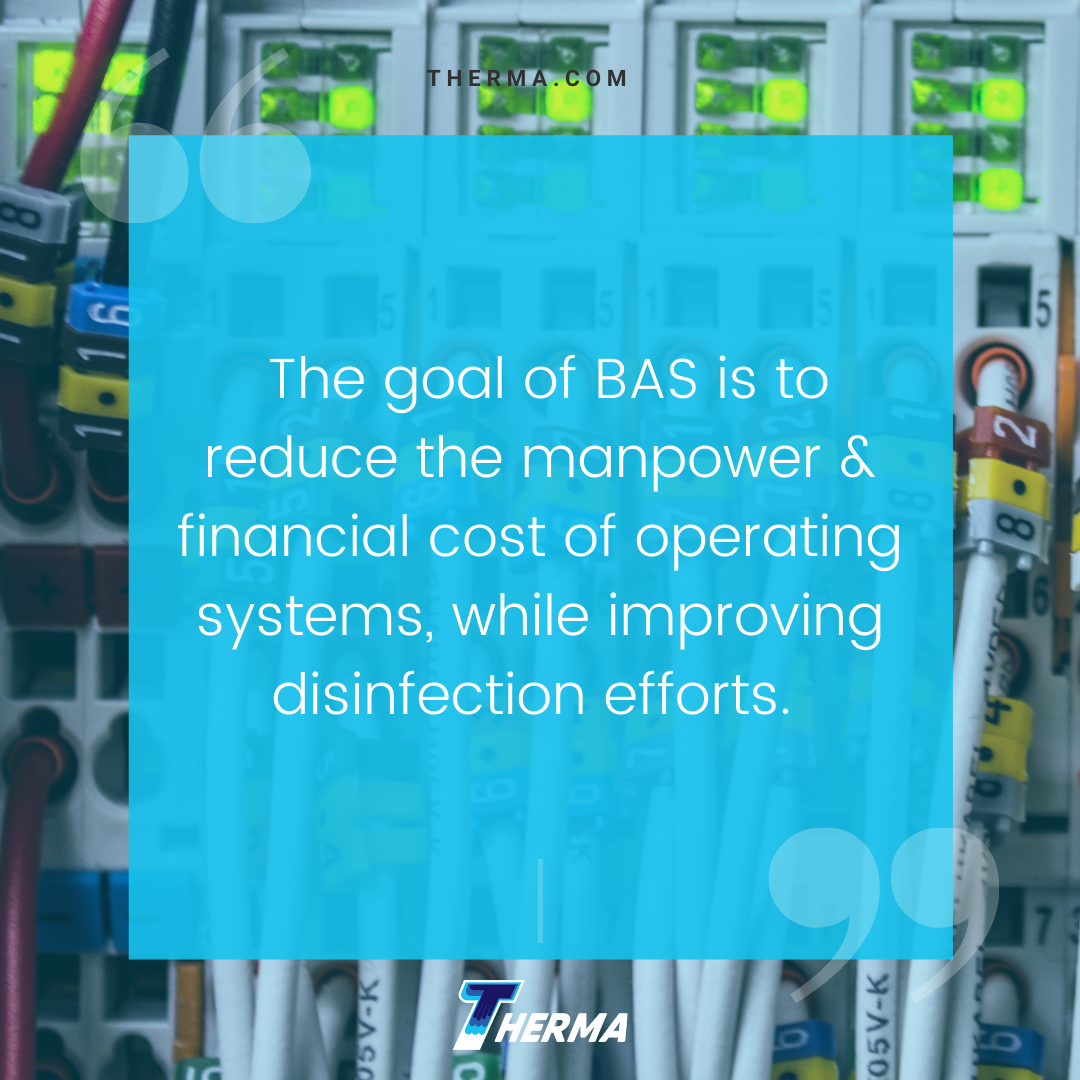The COVID-19 pandemic has expanded the role of building operations in preserving the health of occupants and staff. Building automation systems (BAS) and building integration are valuable tools in protecting people from the coronavirus. Owners and managers expanding on their BAS for the pandemic will likely find benefits that extend into the post-pandemic future.
Building Automation Systems Features
BAS features have given facility managers an edge in efficient operations. The goal of automation is to reduce the manpower and financial cost of operating systems. Staff members can handle automation from a centralized location and use the collected data for diagnostics, alarms, and scheduling. The current pandemic represents an increased workload for some staff and the need for lean operation in other areas.
HVAC is the primary system covered by many BAS. Designs include sensors, controllers, and software capable of monitoring IAQ, system pressures and temperatures, and equipment issues. However, integrated systems expand the scope of available BAS actions with additional sensors and controls.

The Pandemic Effect
The different pandemic requirements and recommendations from local policymakers and health and industry organizations focus on engineering and administrative controls. Organizations such as the CDC and ASHRAE include recommendations for multiple building systems, including HVAC and plumbing.
Control actions focus on the three core principles for reducing the spread of the virus: disinfection, social distancing and PPE. Managers and owners can use building automation and integrated systems to simplify their response to the pandemic, especially for disinfection and social distancing.
Disinfection measures
ASHRAE recommends that sites continue to run HVAC systems even when not occupied as part of a disinfection strategy. The organization’s COVID-19 guidelines also recommend increasing the flow rate of outdoor air through the ventilation system, changing the types of filters used, and continuing scheduled maintenance. Recommended disinfection measures include installation of UV-C lighting and controlling aerosol displacement from restrooms.
Managers and owners already use BAS to monitor HVAC and other systems for efficiency and to regulate flow rates and temperatures. The same software and sensors can be used for monitoring the impact of new filters or varying ventilation flowrates to meet ASHRAE and CDC guidelines. However, janitorial staff can also use information from integrated occupancy sensors or space scheduling to determine where additional cleaning is needed.
Incorporating touchless technology in BAS is another way owners can combat the pandemic. CDC guidelines establish the need for increased disinfection of exposed surfaces, especially those frequently touched by multiple people. Faucets and doors pose less of a risk when multiple individuals do not need to make contact with surfaces. By reducing contamination, touchless technology can help staff create a more feasible cleaning schedule and reduce their risk of exposure.
Social distancing
The CDC recommends flexible or remote worksites, varying work hours, and limiting access to common areas that encourage occupant interaction. Building managers may need to expand their hours of operation while also closing down sections of the facility. The most obvious benefit of BAS during the pandemic is the ability to control systems remotely. Rather than requiring staff to remain onsite or work longer hours to accommodate changing work habits, they can take advantage of remote command.
Integration that includes space, lighting, and temperature scheduling options designed to conserve resources can be used to balance the need for increased ventilation flowrates with HVAC efficiency or in controlling access to areas within the building. BAS can also use integrated touchless technology to monitor or limit access to facilities. Motion detectors and surveillance equipment alert staff when a space is used and the data collected allows managers to evaluate how occupancy policies are applied.

PPE
Automation is useful in distributing PPE and inventory control. By connecting vending style PPE distribution to a building’s BAS, the software can track inventories, offer simple contactless disbursement, and collect data for managers to analyze future needs. As staff are scheduled or notified to clean an area, BAS can identify which areas are most frequently in need of additional PPE or where the building may need a revised cleaning schedule
Into the Future
By adapting features inherent in BAS, owners and managers can encourage social distancing, improve disinfection efforts, and plan tasks that require PPE. Lessons learned in protecting people during the pandemic will better prepare facilities for improving efficiency, reducing operations expenses and dealing with disruptions in the future.







